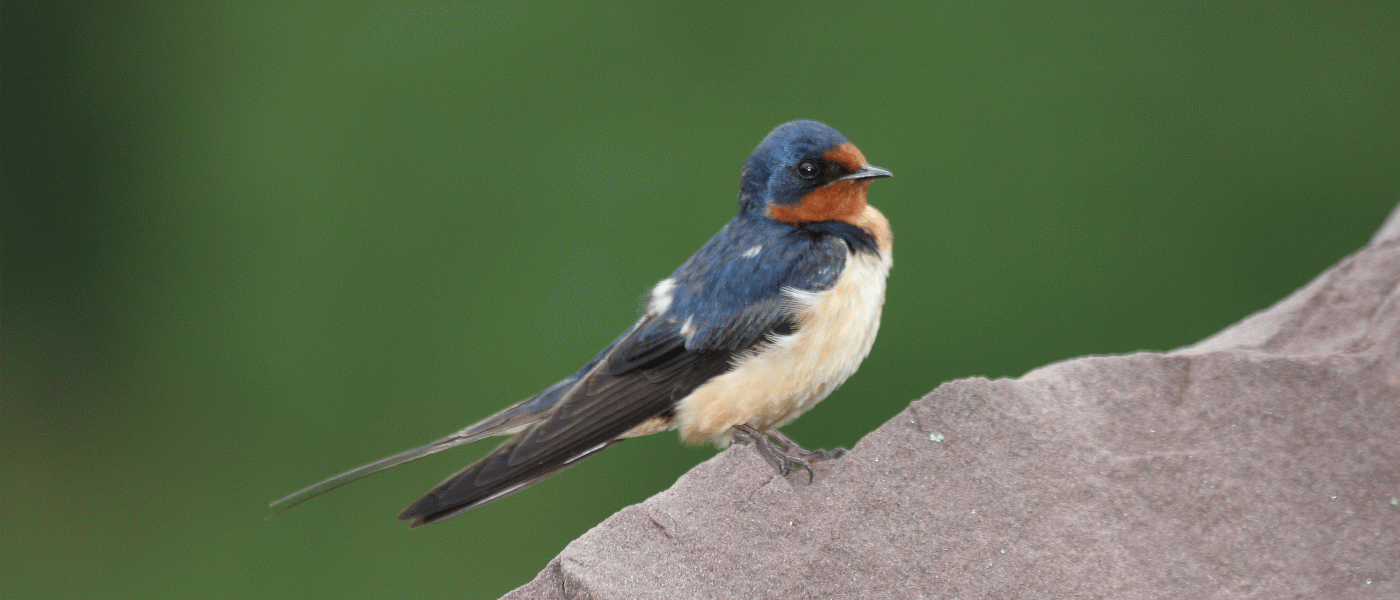Birds of Brooklyn: Barn Swallow
There are seven continents in the world, and there is a Brooklyn-breeding bird that can be found on each one but Antarctica. That widespread bird is the beautiful barn swallow (Hirundo rustica).
This blue and tawny swallow builds its nest mainly in manmade structures such as barns, bridges, and other buildings, often in the eaves of a building with a good overhang. Before these manmade structures were around, barn swallows would nest in caves.

The barn swallow builds its nest in different shapes depending upon placement. When adjacent to a wall, the nest would be a half-cup. When hanging from a cross beam, the nest is a full cup. The nest is mud-lined and reinforced with straw or grass. In the beginning of the nesting season—May here in Brooklyn—it is very common to see barn swallows visiting a mud pond or shore bank to pick up material for the construction on the nest. Barn swallows may nest once or twice during the season and may use the same nest again. Males are somewhat territorial but will join with other swallows to ward off and mob predators like crows and hawks.

The flight pattern of the barn swallow is slightly different from other swallow species. They fly lower to the ground and can drink water and bathe while in flight by touching the water with their belly for a quick bath. Barn swallows feed on insects, and they do most of their feeding while in flight, either over a body of water like a lake or pond or over fields. In Brooklyn, you have a good chance seeing barn swallows in flight above the lake in Prospect Park.
Like all swallows, they need open areas to find food. They are not birds of the forest, but of open grasslands, lakes, and farms. Some farmers are entertained by swallows that swirl around them as they mow and cultivate their land. Swallows know that tractors stir up insects and provide them with a good source of food.

You’ve probably heard birds and some butterflies described as having swallowlike tails. This is probably a reference to the barn swallow, which has the longest, most deeply forked tail of them all. Legend has it that the barn swallow stole fire from the gods and gave it to man. One god got so angry that he hurled a lightning bolt at the bird and burned away its middle tail feathers, creating the swallow tail’s appearance.
Along with the snowy egret and the great egret, barn swallows were once hunted for their plumage. Their feathers were used in the millinery trade. Although not given as much credit as the egrets, barn swallows were partially responsible for the creation of the Audubon Society and for the protection of birds. The next time you see a barn swallow, it should give you many things to think about—its nest construction and flight pattern, its forked tail, its protection history, and just pure beauty. It’s enough to make me want to go try to spot one right now.
The Birds of Brooklyn series looks at some of the most familiar and fascinating birds that call Kings County their habitat.


